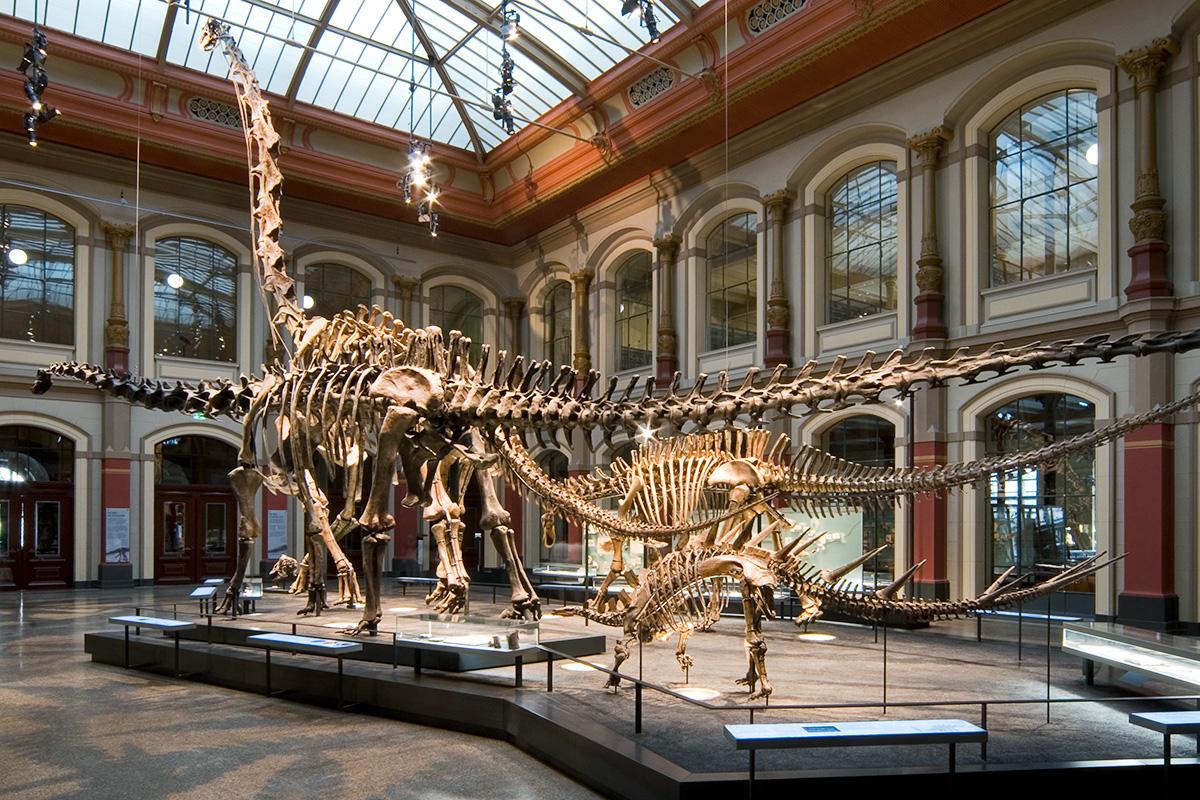A team of researchers led by Dr. Verónica Díez Díaz, postdoctoral researcher at the Humboldt Universität Berlin and the Museum für Naturkunde Berlin, has reconstructed for the first time the three-dimensional musculoskeletal system of the tail of one of the most complete and best-known sauropod dinosaurs: the titanosauriform Giraffatitan brancai. Thanks to this detailed three-dimensional reconstruction of the tail, the authors have been able to more accurately calculate the probable weight and volume of each muscle, and even hypothesize the total values for the complete tail, weighing ca. 2.5 tonnes. The specimens used for this study are housed at the Museum für Naturkunde Berlin, and all the created digital files are freely available.
Since the very first discovery of a dinosaur, not only palaeontologists, but also the general public, have been interested on knowing how these extinct animals looked like. A lot of scientific hypotheses have been made, leading to numerous ways and styles of reconstructions by palaeoartists. These last years, palaeontologists have been able to go one step further on the general knowledge of these extinct animals thanks to recent improvements in computer sciences and digitisation techniques.
A team of researchers led by Dr. Verónica Díez Díaz, postdoctoral researcher at the Humboldt Universität zu Berlin and the Museum für Naturkunde (Germany), has reconstructed for the first time the three-dimensional musculoskeletal system of the tail of one of the most complete and best-known sauropod dinosaurs: titanosauriform Giraffatitan brancai. All the caudal elements of the tail (i.e. vertebrae and haemal arches), together with the pelvis and hindlimb, were digitized by photogrammetry, and later the caudal skeleton was reconstructed using a specific software. After this, the muscles were modelled thanks to the osteological correlates that these soft tissues leave on the bones (as rugosities and ridges). Homologies between these osteological correlates and muscle origins and insertions were compared with the closest extant animals with tails to dinosaurs, crocodiles.
Thanks to this detailed three-dimensional reconstruction of the tail, the authors have been able to more accurately calculate the probable weight and volume of each muscle, and even hypothesize the total values for the complete tail, weighing ca. 2.5 tonnes. However, almost half the weight was probably located in the anterior part of the tail, where the massive and powerful hypaxial musculature helped on the propulsion of the hindlimb.
This kind of reconstructions are acknowledged on the scientific community, as they also help on understanding the posture and locomotion of extinct animals. With the proposed methodology more detailed projects could be developed, for example on a complete individual, or biomechanical analyses.
The specimens used for this study are housed at the Museum für Naturkunde (Berlin, Germany), and all the created digital files are freely available under this DOI link: 10.7479/xm1h-5806
Publication:
Díez Díaz et al. (2020) The Tail of the Late Jurassic Sauropod Giraffatitan brancai: Digital Reconstruction of Its Epaxial and Hypaxial Musculature, and Implications for Tail Biomechanics. Frontiers in Earth Science.
https://www.frontiersin.org/articles/10.3389/feart.2020.00160/full
More information about the xcinece history of Giraffatitan brancai in that publication:
"Dinosaurierfragmente"
Zur Geschichte der Tendaguru-Expedition und ihrer Objekte, 1906 - 2018
Ina Heumann, Holger Stoecker und Mareike Vennen
Wallstein Verlag GmbH 2018, ISBN 978-3-8353-3253-9
More information here.
Pictures for free use in connection with the press release:
http://download.naturkundemuseum-berlin.de/presse/GiraffatitanschwanzDigital
